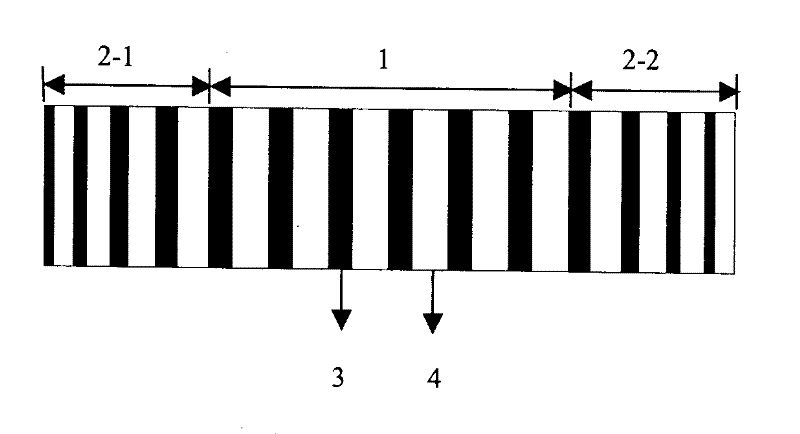Multi-channel wavelength space decomplex film device based on two-end thickness decreasing structure
A space solution, multi-channel technology, applied in the direction of wavelength division multiplexing system, etc., can solve the problems of inability to realize multi-channel dispersion and light splitting effect, large space of grating devices, unfavorable integration, etc., and achieve no need for temperature control and good solution multiplexing effect, low production cost
- Summary
- Abstract
- Description
- Claims
- Application Information
AI Technical Summary
Problems solved by technology
Method used
Image
Examples
Embodiment 1
[0020] Example 1: Multi-channel wavelength demultiplexing based on thin film with decreasing thickness at both ends
[0021] Such as Figure 4 As shown, when a beam of multi-wavelength light 5 is incident on the thin-film device, a row of optical fibers 6 can be used in the direction of reflected light to guide the light of each wavelength that has been space-separated by the thin-film device away through the optical fiber to realize the wavelength demultiplexing.
Embodiment 2
[0022] Example 2: Thin film with decreasing thickness at both ends to realize high-resolution spectral analysis
[0023] Another application such as Figure 5 As shown, the CCD detector can be directly placed at the position of the reflected light to receive the reflected light spot, and the light intensity of different wavelengths can be determined according to the signals detected by different CCD units, so as to realize real-time high-resolution spectral analysis. Among them, 7 represents the photoelectric line array sensor.
PUM
 Login to View More
Login to View More Abstract
Description
Claims
Application Information
 Login to View More
Login to View More - R&D
- Intellectual Property
- Life Sciences
- Materials
- Tech Scout
- Unparalleled Data Quality
- Higher Quality Content
- 60% Fewer Hallucinations
Browse by: Latest US Patents, China's latest patents, Technical Efficacy Thesaurus, Application Domain, Technology Topic, Popular Technical Reports.
© 2025 PatSnap. All rights reserved.Legal|Privacy policy|Modern Slavery Act Transparency Statement|Sitemap|About US| Contact US: help@patsnap.com



